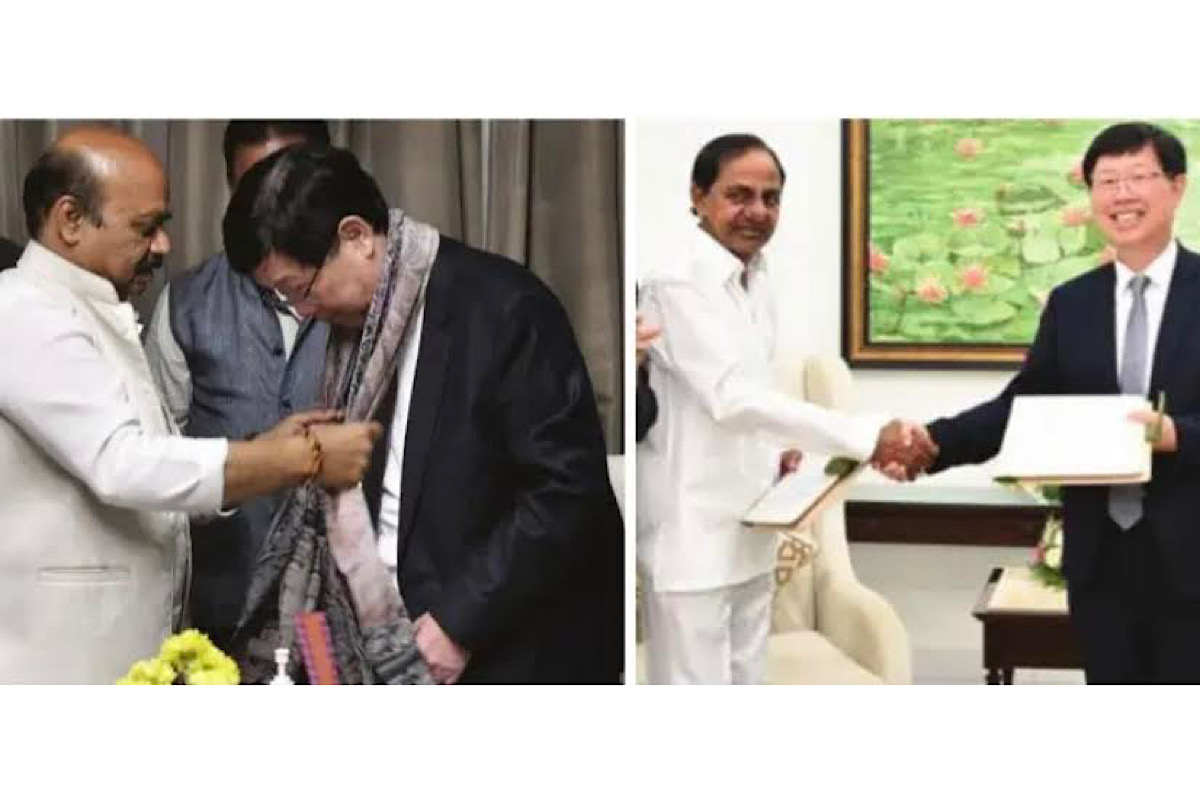
Representation image (File photo)
During the first week of March, Chairman of the Taiwan based Foxconn ~ manufacturer of Apple products like iPhones ~ met the Chief Ministers of Karnataka and Telangana. Both Chief Ministers afterwards claimed that Foxconn will make huge investments in their states that will create one lakh direct and indirect jobs in each state over time. Though the scale of investment was not revealed by them, Karnataka officials informed that the investments on the project for manufacturing and assembling of iPhones at a 300-acre site in the outskirts of Bengaluru will be between $500 million and $1 billion from 2023 to 2027, when the project is likely to be completed.
Foxconn reacted initially by saying there was no definitive binding agreement yet, but Bloomberg reported that Foxconn was planning to invest about $700 million in a new plant in India to ramp up local production of iPhone parts and potentially other items. The plant could also be used to assemble handsets for Apple and for making some parts for the company’s nascent electric vehicle business.
Foxconn, officially known as the Hon-Hai Technology Group, is the biggest contract manufacturer of electronics manufacturing services (EMS) in the world. Reuters reported that Apple and Foxconn both were among the companies that lobbied for a landmark liberalisation of labour laws in Karnataka that led to a legislation allowing 12-hour shifts, as well as night-time work for women, similar to the company practices in China.
Apple has been shifting production away from China after the country’s strict Covid-related restrictions disrupted the manufacturing of new iPhones at its Zhengzhou mega factory that employs 300,000 workers, and also to avoid a big hit to its business from the rising tensions between Beijing and Washington. The Foxconn conglomerate already has two facilities in India ~ one at Sriperumbudur in Tamil Nadu where it makes iPhones, and the other in Sri City, Andhra Pradesh, which acts as a contract manufacturer for brands such as Xiaomi. Establishment of large manufacturing facilities on the outskirts of Hyderabad and Bengaluru is definitely good news for Indian manufacturing, and yet another example of increasing FDIs flowing into India.
FDIs took a long time to recover from the body blow given by the late Pranab Mukherjee when, to override a Supreme Court Judgment, he had introduced retrospective taxation by amending the Income Tax Act in his FY13 budget, defying economic logic as well as sane counsel of the PM and his cabinet colleagues that it would adversely impact the FDIs that India needed so much. The FDI inflow indeed fell sharply as a fallout of the amendment. FY 2012 had seen FDI reaching a record $47 billion or 2.5 per cent of GDP, registering a growth of 34 per cent over the previous year. It nosedived by 26 per cent in FY2013 to only $34 billion or 1.8 per cent of GDP.
It would take another three years to reach the FY12 level of 2.4 per cent of GDP in 2015-16, with a total FDI inflow of $56 billion. India’s position in the World Bank’s index of investment friendliness fell from 131 in 2011 to 134 in 2013, where it remained below Uganda, Ethiopia, and Yemen. The retrospective taxation law has practically destroyed our once vibrant telecom sector which was till then a huge success story. The sordid chapter was finally closed by the present government by enacting The Taxation Laws (Amendment) Act in 2021 that nullified the retrospective taxation introduced in 2012.
There are two routes through which foreign entities can invest directly as equity in Indian industries: Automatic route and Government route. Under the Automatic Route, the foreign investor does not require any approval from RBI or Government of India and can invest directly. Under the Government Route, prior approval of the Government of India or its agencies is required. Proposals for foreign investment are considered by the Foreign Investment Promotion Board (FIPB) or the Cabinet Committee on Economic Affairs (CCEA) or the Cabinet Committee on Securities. In certain cases, the Department of Economic Affairs or Department of Industrial Policy & Promotion also assist the above approving agencies. The FIPB considers investments up to Rs 5,000 crores for approval. Above this limit, approval will be made by CCEA.
FDIs started picking up from 2014-15 after the NDA government came to power and started initiating major reforms. In 2013- 14 the total FDI inflow was $36 billion which increased to $45 billion in the next year. Besides retrospective taxation, the other factors that stymied growth of FDI prior to 2014 included the existence of multiple sectors under the government route and low FDI limits under various sectors. There were many onerous FDIlinked performance conditions which discouraged foreign investors, especially when increasing globalisation was engaging the other countries in competitive liberalisation to attract the FDI.




